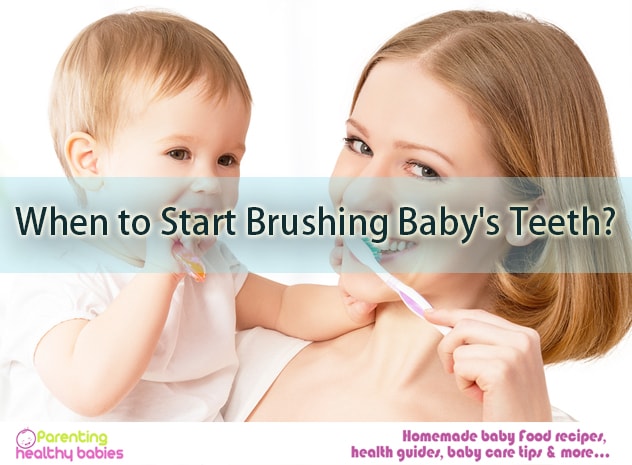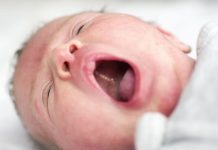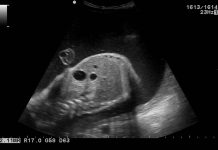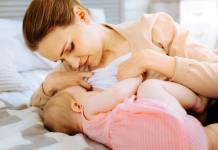So, your baby has started teething and you do not know when you should start brushing her teeth. Read on for more information!
When to Start Brushing Baby’s Teeth?
Teething in babies can be quite a fussy affair right from drooling to refusing food, from loose stools to fevers and so on. But when those tiny little teeth start making their appearance the kid looks really cute. Initially the front teeth appear, the first two on the lower gums and then on the upper gums. The rest of the teeth follows a pattern. By the time the child is 3 years old; all the primary teeth come out.
Read More: When Do Babies Start Teething?
Though these teeth may be small, but they are quite important. Without a proper set of primary teeth, the baby will not be able to eat all kinds of foods conveniently as it will make chewing difficult. Teeth also help in speaking properly. A child with a healthy set of teeth has clear speech. Moreover, they are the base of the teeth which last lifelong all throughout adulthood.
As a result, it is important that teeth of babies should be taken care of well right from the beginning. This will protect from cavities and tooth decay. Having healthy dental habits right from childhood will ensure that lifetime of good dental health for the person. Lost or decayed baby tooth can hamper nutrition and affect overall growth and development of a kid drastically. Speech development can also be impaired.
Starting to Brush Babies’ Teeth
If you thought that babies’ teeth do not need brushing, you are highly mistaken. Brushing in babies is needed right from the time, the first teeth pops out from the gums. Since the gums and the teeth are extremely delicate, one should not use a brush for brushing the teeth. The best thing to use for brushing teeth in toddlers is a clean and damp washcloth. A gauze pad is also of great use. You can also use your first finger for gently wiping the baby’s teeth. The tongue can also be cleaned in this method. Try doing this after meals and at the time of going to bed at night.
When few more teeth come out from the gums, you can use baby toothbrush for brushing the infant’s teeth. Ensure that the toothbrush is moistened with water so that it becomes soft. Take extremely small amount of toothpaste on the brush and gently rub on the child’s teeth. The toothbrush should be very soft with not more than three rows of bristles on it. There are pediatric dentists who can help you in finding the right kind of toothbrush for your little one. If you find that the toothbrush has become slightly hard at the edges, it is recommended to throw away the same. Also refrain from using toothbrushes in kids which are more than 2-4 months old. There are high chances of bacteria build up in the brushes and can affect the child’s health adversely.
Read More: 15 Common Toddler Tooth Problems And Remedies
Taking care of baby’s gums
Pediatric dentists emphasize on cleaning gums of babies preferably after feedings. This helps in promoting good oral health and helps in fighting bacterial growth in the mouth. There is no need to wait till teething happens for this. You can start brushing the gums of the little one much before teeth start appearing in a baby. Using a toothbrush is not a good option for cleaning the gums in a baby. Instead you can try using a soft and damp cloth for cleaning the gums. Apart from this, you can also try silicone finger brush or soft rubber finger brush. Good thing about these products is that they are soft to touch and have a nubby kind of texture, which kids generally love. Healthy gums help in having healthy teeth.
Read More: 11 Baby Tooth Care Tips Every Mom Should Know
Using fluoride toothpaste for babies is good
There was a time when dentists did not recommend using fluoride toothpaste for infants’ teeth brushing. But now, things have changed and pediatric dentists prescribe and recommend using fluoride based toothpastes in very small quantities for brushing teeth of infants right from the time the first teeth appear. Rice-grain size amount of toothpaste should be used initially, which can be increased to pea-size dollop by the time the child reaches 3 years of age. Don’t get worried of the child swallows some amount of toothpaste (all of them do this).
With good dental habits right from the beginning, the child will learn to take care of his/her teeth on his/her own.













